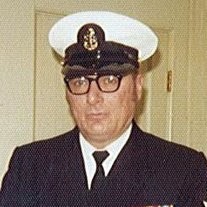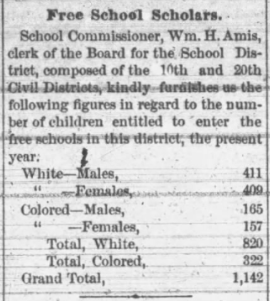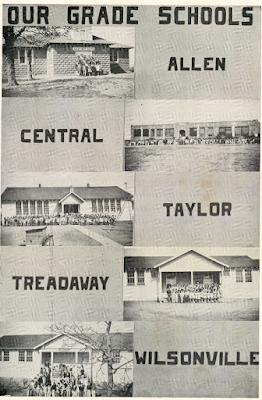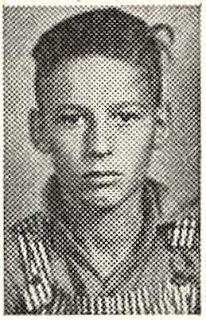Do I have to admit I made a mistake? Well, I have made several but I correct them and move on hoping that others notice my updates. Anyway, while researching my 2x’s great-uncle, James Marshall Sutton, I looked for sources that would reveal his wife’s maiden name. I couldn’t find a tree or marriage record that provided the information at the time and Oklahoma isn't the most genealogy friendly state (for certain records). I stumbled on a California death index on a son thinking I finally had his wife’s maiden name. It turned out to be a poor source as the informant gave the maiden name of the son’s spouse! For a few years, I thought James was married to a Rosser so as time went on and more records became available then I discovered he married Louiasy Martela Purkey on February 17, 1884 in Tennessee. In fact, his brother Peter also married a Purkey who was a first cousin to Louiasy.
 |
| Louiasy Martela Purkey and James Marshall Sutton with a granddaughter. Photo may have been taken in Park Hill, OK. |
Six children were born to James and Louiasy. A grandson, Johnie Lee Sutton, began researching the family tree and posted some inquiries on Ancestry’s message boards that I discovered in 2014. Unfortunately, he had passed away in 2013 but his cousin, Shirley, was able to provide me with several photos of James’ family and descendants.
 |
| Hubert Bartley Sutton and Ada Rosser. Johnie Lee Sutton's parents. Photo provided by Shirley Stanford. |
It was the California death certificate of Hubert Sutton (Johnie’s father) that led me astray. It turned out his wife was Ada Rosser and she was 1/4th Cherokee according to her Native American enrollment card. I mention this because another mistake was introduced to our heritage when my father was told that he needed to meet his Cherokee cousins. Dad had not researched the line and, between all the family stories, he mistakenly thought the Native American line descended through an earlier Sutton line.
Ada was born in Indian Territory in 1901 and appears on the Cherokee Nation roll along with her parents and a brother named Kipling. Her father had been enumerated in the Illinois district while her mother was enumerated in the Flint district.
Ada married Hubert Bartley Sutton on December 16, 1919 in Washington County, Arkansas. He had been born and raised in this area. The couple moved to Verdigris, Rogers County, Oklahoma by 1920. There were nine children born to this union: Vica Marie, Bonnie Mae, Reba Emily, Lowhman Bartley, Warren Felix, Ladahlia Dora, James Charles, Louise Jane, and Johnie Lee Sutton.
 |
| Back row left to right: Reba, Louise, Bonnie, Ladahlia, and Vica. Front row left to right: James, Lohman, Ada Rosser Sutton, and Felix. Photo provide by Shirley Stanford. |
 |
| Ada Rosser Sutton and son, Johnie Lee Sutton. Photo provided by Shirley Stanford. |
Johnie was the youngest of Hubert and Ada's children. It is too bad we didn’t meet and do some research together:
Funeral service for Johnie Lee Sutton will be 10 a.m., Fri., May 31, at the Musgrove-Merriott-Smith Chapel with Rev. Doodle Woodson officiating. Burial will follow at Woodlawn Cemetery. Visitation will be held at the funeral home Thurs. 1-8 p.m.
Johnie passed away Mon., May 27, 2013, at Claremore Nursing Home at the age of 74.
The son of Hubert Bartley and Ada Emily (Rosser) Sutton was born June 16, 1938, in Claremore. Johnie graduated from Claremore High School in 1957, and on July 1 of that year entered the U.S. Navy. He served during the Vietnam War and retired in 1982. He then went to work as a machine operator for Allegheny Ludlum. Johnie could be found at Starbuck's or Sonic on Friday mornings. He enjoyed his morning and evening drives, fishing, skeet shooting, wildlife, and photography.
He was preceded in death by his parents; brothers: James C., Lowhman, and Felix Sutton; sisters: Bonnie Sutton, Reba Evans, Vica Smith, Louise Decker, and LaDahlia Cunningham; and nephews: Ronnie Decker and Sonny Sutton.
Johnie is survived by his step-daughter, Annette Renee Sherman of Dallas, TX; nieces and nephews: Loranna Minor and husband, Bill of Claremore, Melissa Walker and husband, Andy of Tulsa, Robin Kindle of Claremore, Reva Hayes of Claremore, Rodney Decker and wife, Karen of Spring Valley, CA, Shirley Stanford, Sharon Clark, and James H. Sutton and wife, Holly of Claremore; and sisters-in-law: Margaret Sutton and Geraldine Brown both of Claremore (source: mmsfuneralhomes.com).
Johnie passed away Mon., May 27, 2013, at Claremore Nursing Home at the age of 74.
The son of Hubert Bartley and Ada Emily (Rosser) Sutton was born June 16, 1938, in Claremore. Johnie graduated from Claremore High School in 1957, and on July 1 of that year entered the U.S. Navy. He served during the Vietnam War and retired in 1982. He then went to work as a machine operator for Allegheny Ludlum. Johnie could be found at Starbuck's or Sonic on Friday mornings. He enjoyed his morning and evening drives, fishing, skeet shooting, wildlife, and photography.
He was preceded in death by his parents; brothers: James C., Lowhman, and Felix Sutton; sisters: Bonnie Sutton, Reba Evans, Vica Smith, Louise Decker, and LaDahlia Cunningham; and nephews: Ronnie Decker and Sonny Sutton.
Johnie is survived by his step-daughter, Annette Renee Sherman of Dallas, TX; nieces and nephews: Loranna Minor and husband, Bill of Claremore, Melissa Walker and husband, Andy of Tulsa, Robin Kindle of Claremore, Reva Hayes of Claremore, Rodney Decker and wife, Karen of Spring Valley, CA, Shirley Stanford, Sharon Clark, and James H. Sutton and wife, Holly of Claremore; and sisters-in-law: Margaret Sutton and Geraldine Brown both of Claremore (source: mmsfuneralhomes.com).
 |
| Johnie Lee Sutton |







